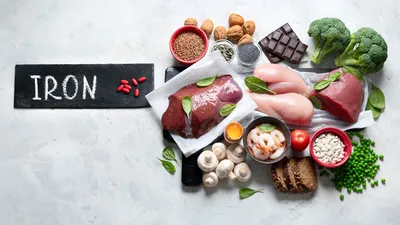
Serving mothers all over the eastern area of the DFW metroplex including Rockwall, Mesquite, Garland, Forney, Royse City, Greenville, Wylie, Richardson and Rowlett. We looks forward to meeting you and your family!
SCHEDULE YOUR FREE CONSULTATIONBlood is made of both red blood cells and the clear liquid they float in. Before pregnancy, an average size woman has about 9 pints of blood, which is a little over 4 liters. During pregnancy, women increase their blood volume by 50%.
The liquid part of blood (plasma) expands more quickly than your body can make red blood cells. So, the red blood cells get gradually more “diluted” in the first 28-weeks. That’s why pregnant women become anemic in the first 6 months of pregnancy. It’s also why it’s so important for women to commit to recovering from anemia in the last 3 months of pregnancy. The importance of good nutrition throughout pregnancy cannot be overstated.
The most common type of anemia is iron deficiency anemia (75% of all anemia). That’s the one we see in pregnancy the most.
Another important component of blood is called Platelets. It is important to have adequate platelets before you go into labor.


What labs are important?
I draw a blood lab at the 1st prenatal appointment, 28-weeks, and 36-weeks. The concentration of red blood cells (hemoglobin) should be around 14% at the start of pregnancy, may drop to 10.5% and should recover to at least 11.5% by the end of pregnancy. Making sure your body has enough red blood cells to carry oxygen to your organs is important for a safe, healthy, out-of-hospital birth.
Your platelets should be between 100-400 million per milliliter of blood.
It is possible to have low blood cells (anemia) and low platelets (thrombocytopenia) separately, or both at the same time.
The strategies for increasing both blood components is roughly the same, and includes attention to your diet and very likely also supplementation. This handout was created to give you a plan to increase your hemoglobin and platelets before you go into labor.
What are the risks of anemia or thrombocytopenia?
Red blood cells carry oxygen to the mom’s organs and to the baby. When a woman is anemic, she may experience fatigue, fast heartbeat, shortness of breath, headache, difficulty concentrating, dizziness, pale skin, leg cramps and insomnia.
Iron deficiency anemia can cause preterm delivery, postpartum depression, and cause life-threatening issues for the baby.
Low platelets can contribute to excessive bleeding in birth. They also may be an indication that your liver is not functioning optimally. Low platelets can make a woman have restless legs, fatigue, and cause her to bruise easily.
How can I recover from anemia and thrombocytopenia?
The best way to improve anemia and thrombocytopenia is to increase your blood count by a) good nutrition b) good iron supplementation c) good B-12 supplementation
Nutrition:
Foods with absorbable, dietary iron include: Whole grains, brown rice, blackstrap molasses, beets, liver, red meats, fish & poultry, egg yolks, legumes, nuts, Beef liver, Sesame seeds, Banana, Rye flour Tuna / Salmon, Shiitake mushrooms
Foods with Folate (B-9) include: dark leafy vegetables (spinach and kale) beans, lentils, peas, nuts,
Foods with B-12 include: red meat, fish, milk and cheese, eggs.
Other foods that may help: poultry, shellfish, liver, beans, cherries, nuts
Foods with Vitamin A: spinach & kale, sweet potatoes, squash, carrots, red peppers and melons
Foods that may increase platelets: Omega 3 fatty acids found in fish, tuna, wild salmon and flax oil. Drink adequate fresh room temperature water (rather than cold water).
Avoid or eliminate processed foods, junk food and refined sugar from your diet. Also, avoid caffeinated drinks which may interfere with bone marrow activity and reduce platelet count.
Supplements:
Target Amounts for Supplements:
What else can I do?
Exercise is one way to support a healthy circulatory system. Raising your body’s demand for oxygen causes your body to make more red blood cells. You should be walking briskly for at least 30 minutes per day.
What if I’m anemic at the time of birth?
If you are anemic at the 28-week appointment, I will recommend supplements. It usually takes about 4-weeks for the iron or platelets to recover. So, I will draw your labs (with your consent) at 36 weeks.
My goal for your iron level is 11.0 or greater. If it between 10.0 - 11.0, I will request that you continue taking iron. At the birth, I will monitor your bleeding more closely and may need to manage postpartum bleeding much quicker, which may mean you will need a shot of Pitocin in your thigh soon after the birth, but only if necessary.
If your iron is below 10.0, I will recommend that you continue taking iron. I will do ongoing risk assessments. Because the level of iron in the blood can impact both mother and baby, anemia becomes a “risk factor” that will mean I will need to manage bleeding, fetal distress, and signs of newborn or maternal distress more quickly. That may mean that you and/or your baby may need more interventions or to be transported in labor.
The emphasis here is: Eat a healthy diet, take good iron supplements, add vitamin C to your diet . . . everyone is better off if your hemoglobin is 11.0 or greater.
